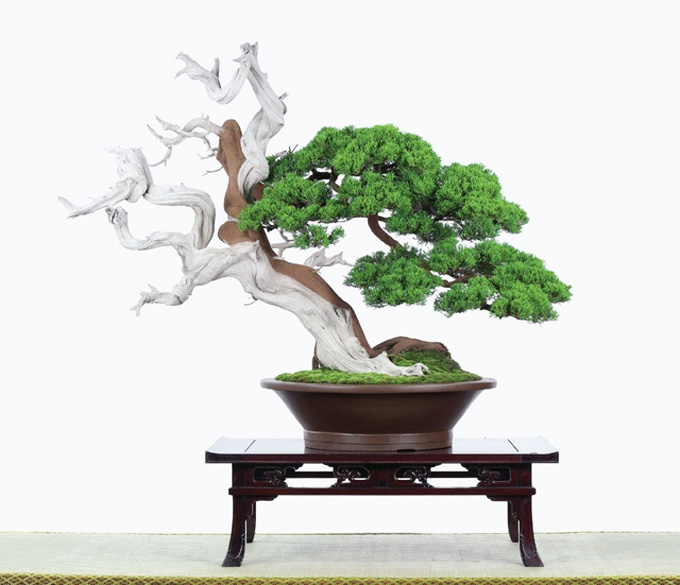 I don’t recognize this sculptural Shimpaku and it’s not labeled on the Japanese Bonsai Pots Blog (random photos section), from whence I borrowed it (it belongs to Mr. Chiu Chung Cheng, see comments below). I like the overall composition; the way the stand, pot and tree go so well together. One thing that seems a little unusual, is how large the live vein is relative to the rather narrow branch that it supports.
I don’t recognize this sculptural Shimpaku and it’s not labeled on the Japanese Bonsai Pots Blog (random photos section), from whence I borrowed it (it belongs to Mr. Chiu Chung Cheng, see comments below). I like the overall composition; the way the stand, pot and tree go so well together. One thing that seems a little unusual, is how large the live vein is relative to the rather narrow branch that it supports.
I’ve been meaning to feature Ryan Bell’s Japanese Bonsai Pots Blog ever since I stumbled upon it a couple months ago. For a relative bonsai newcomer, I’m impressed with just how thoroughly Ryan has jumped into the thick of the bonsai fray (I’ll let you sort out the ambiguities embedded in this somewhat strange sentence). I’m especially taken with his pot collection (many are for sale) and his recent photo journey through many of our bonsai nurseries here in the Northeast (part 1 and part 2).
All the photos in the post are from the Japanese Bonsai Pots Blog.
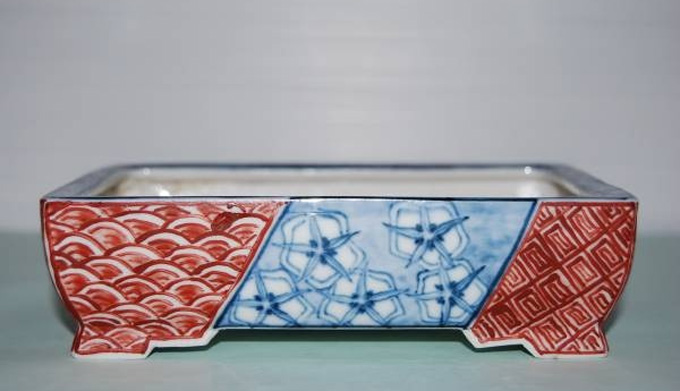 Hand painted geometrics on porcelain by Owari Yuho.
Hand painted geometrics on porcelain by Owari Yuho.
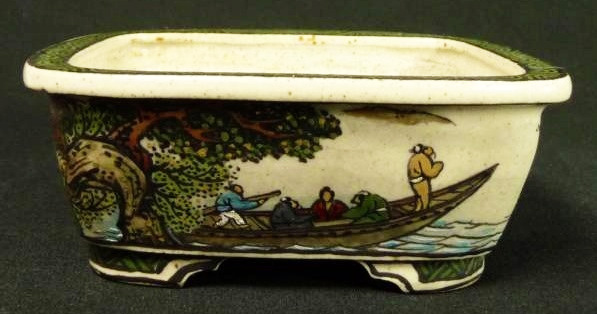 Hand painted pot by Sano Daisukie.
Hand painted pot by Sano Daisukie.
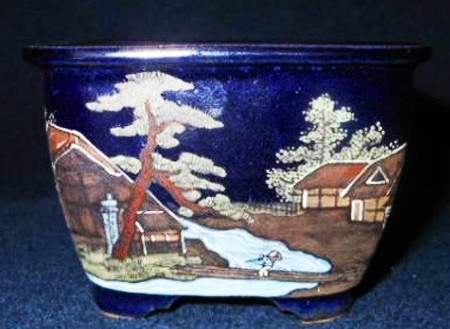 Another hand painted pot by Sano Daisukie. Do you suppose that that’s a Japanese black pine?
Another hand painted pot by Sano Daisukie. Do you suppose that that’s a Japanese black pine?
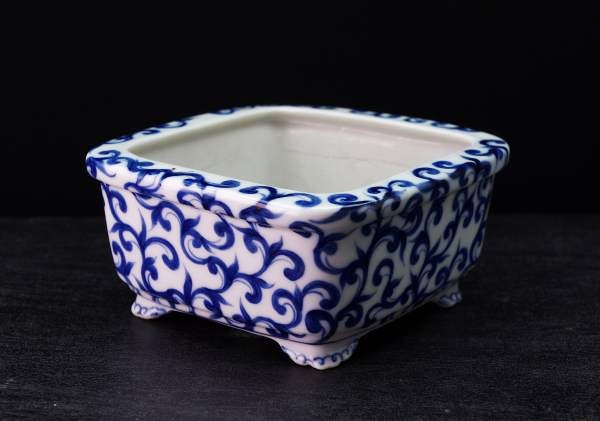 What kind of tree would you put in this pot? Ryan’s caption says “Super rare Tojaku porcelain arabesque. Pristine porcelain. Beautiful painting.”
What kind of tree would you put in this pot? Ryan’s caption says “Super rare Tojaku porcelain arabesque. Pristine porcelain. Beautiful painting.”
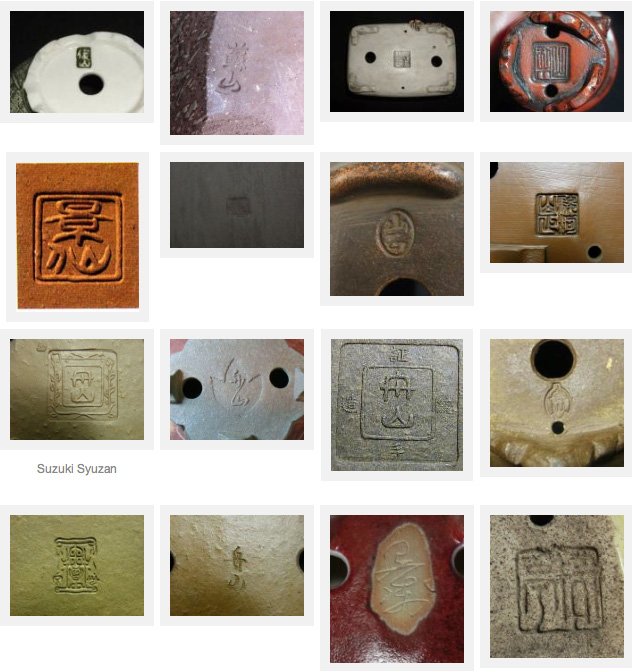 A piece of a photo collage that Ryan calls his Chop, Seal and Signature Resource.
A piece of a photo collage that Ryan calls his Chop, Seal and Signature Resource.
I’m not sure I would put any thing in these pots. They are beautiful and would probably take your eye away from the tree, and I thought the pot was supposed to complement the tree.
Wayne,
The Shimpaku is from Cheng, Cheng-Kung, developer of the Sidiao technique of deadwood texturing. His creations are pretty spectacular, as are the bonsai of many members of the Taiwan Bonsai Creators society.
Ann,
These are shohin bonsai pots, and the guidelines and goals for shohin bonsai pot/tree matches is very different from that of large trees. In a classical 7 piece display of shohin bonsai, pots that are very colorful and different provide variety and interest, and can help create eye movement throughout the display by drawing the eye to specific focal points. A maple in a glaringly bright yellow pot would be dwarfed on its own, but surrounded by other trees in muted greens, creams, an unglazed red, and a painted blue, and it’s not nearly as glaring.
Wayne,
The information offered by Ryan is inaccurate. I am afraid that this Taiwan Juniper (not shimpaku) does not belong to my teacher Cheng Cheng Kung. It belongs to one of my sempai, Mr. Chiu Chung Cheng, one of Lao Tze’s students.
Warm regards,
Jose Luis
Wayne,
Also all three trees labeled in the Random Shots section of the Japanese Bonsai Pots Blog as “The three above are my favorites from Bonsai Sidiao master, Cheng Cheng Kun” were not created and do not belong to Lao Tze Cheng Cheng Kung. They are also the work and belong to Mr. Chiu Chun Cheng.
Warm regards,
Jose Luis
Jose Luis,
Thanks for the clarification on the owner of the trees. However, was attributing them to the website of Cheng Cheng Kung, which is where I found the photos published, which was why I mentioned the Taiwan Bonsai Creators, as their are many trees from the many members published there. I will clarify that, thanks.
As always thanks Jose Luis for setting us straight.
My apologies for the confusion.